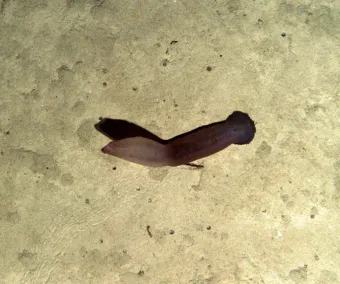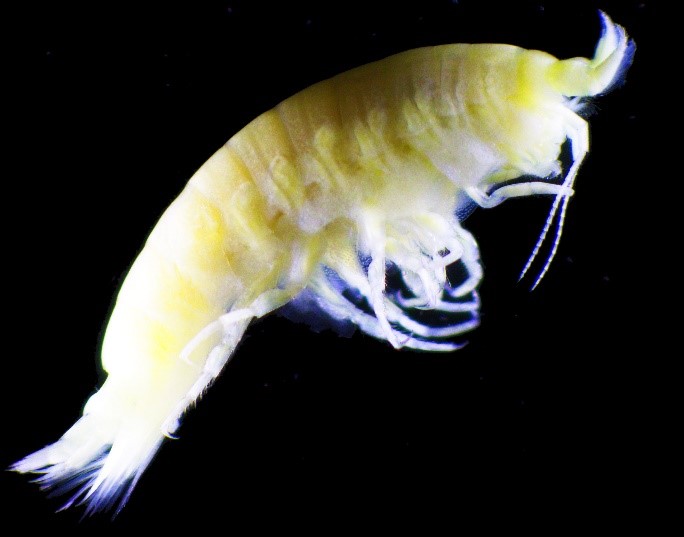
- A new study co-authored by the National Oceanography Centre (NOC) has standardised collection of vital seafloor data.
- Reliable and robust seafloor data is essential to inform policy makers and protect the ocean.
- The new practice will enable researchers to leverage powerful new technologies to further transform understanding of marine ecosystems.
Reliable and robust data about marine ecosystems are essential for good decision making and the development of sound environmental policies. However, data about marine life are challenging to collect, integrate, and analyse. Invertebrate animals are a key component of life on the seafloor, but their wide range of body sizes and great diversity make it especially difficult to understand their abundance and distribution.
NOC scientists have helped develop a new set of research practices which, in partnership with the Deep Ocean Observing Strategy and the Marine Biodiversity Observation Network, can help to standardise the information researchers and ocean industry contractors collect about seafloor invertebrates. Led by CeNCOOS (Central and Northern California Ocean Observing System) Director Henry Ruhl, the international team of researchers published their findings in Limnology and Oceanography Letters earlier this month.
CeNCOOS’s Henry Ruhl, lead author of the study commented: “We’re highlighting a common pathway for ecologists studying seafloor invertebrates. We’ve outlined best practices that will make it much easier to combine data from various sources and methods. By standardising the data we collect, we can provide more critical information that policy makers need to sustainably manage and protect the ocean”.
Researchers can use well-established tools and methods to collect information about the physical conditions of the ocean, like sea surface temperature. But collecting data about the biological communities below the ocean’s surface is far more challenging.
Scientists have long recognised that marine invertebrates are a critical component of seafloor communities. Sponges and snails, crabs and corals, worms and sea cucumbers – marine invertebrates occur across 71% of Earth’s surface and come in sizes spanning ten orders of magnitude, from less than one millionth of a gram to over a kilogram.
Scientists are actively studying seafloor invertebrates and collecting a lot of data about these organisms. However, researchers have struggled to move beyond individual studies to see broad-scale patterns, a critical step to building ecological assessments that can inform management and policy.

For example, how can datasets that sample different sizes of organisms, or use different sampling and observing methods, be combined in integrated assessments and ecosystem models to advance our understanding of seafloor biomass, energy flow, and related ecological variables?
NOC’s Dr Brian Bett, co-author of the study said: “The difficulties of integrating information across all size classes and varying sampling methodologies has limited our ability to understand global patterns in invertebrate populations. We will struggle to distinguish natural variation, climate change, and other human impacts on seafloor ecosystems without being more effective in sharing and combining our hard-won data.”
Effective management of ocean ecosystems and resources hinges on a local to global effort. This is reflected in the team involved in this work which also included contributions from the University of Plymouth (UK), the Ocean Biodiversity Information System, Intergovernmental Oceanographic Commission of the United Nations Educational Scientific and Cultural Organization (Belgium), Università Politecnica delle Marche (Italy), and Florida State University (USA).
This works contributes to the intergovernmental activity carried out by the Global Ocean Observing System (GOOS) which develops guidance to deliver the essential information needed for the sustainable management of marine resources. GOOS helps coordinate a community of international, regional, and national ocean observing programs, as well as governments, UN agencies, research organisations, and individual scientists.
The international team has outlined five research practices that can help to establish a new GOOS Essential Ocean Variable (EOV) for seafloor invertebrate abundance and distribution:
- Assess individual body size.
- Identify the well-quantified portions of sampled body-size spectra.
- Take advantage of automated and semi-automated information processing via artificial intelligence and machine learning.
- Apply internationally established biological diversity data standards, such as Darwin Core.
- Make data available through internationally recognised access points, such as the Ocean Biodiversity Information System (OBIS).
Among these practices, measuring body size is critical to harmonising the data that scientists around the world are collecting. These practices enable broader-scale analysis supporting research and sustainable development, such as assessments of indicator taxa, biodiversity, biomass, and the modelling of carbon stocks and flows across time and location. Integrating data about seafloor invertebrates will allow researchers to leverage powerful new technologies, including artificial intelligence, to further transform our understanding of marine ecosystems.
Dr Brian Bett continued: “The NOC team was able to access a wealth of data on seafloor invertebrates from the Porcupine Abyssal Plain Sustained Observatory and in-house ecosystem modelling expertise to contribute to this important advance in the monitoring and protection of seafloor ecosystems”.
This research supports our commitment to pursue a deeper understanding of the ocean and life beneath the waves, aligned to the UN Ocean Decade’s goal to secure and protect ocean resources and ecosystems. Find out more about our science.